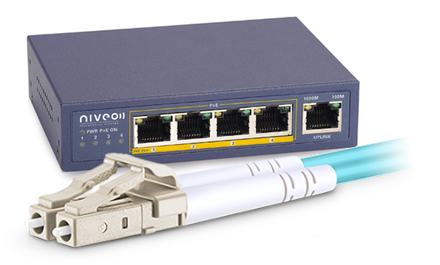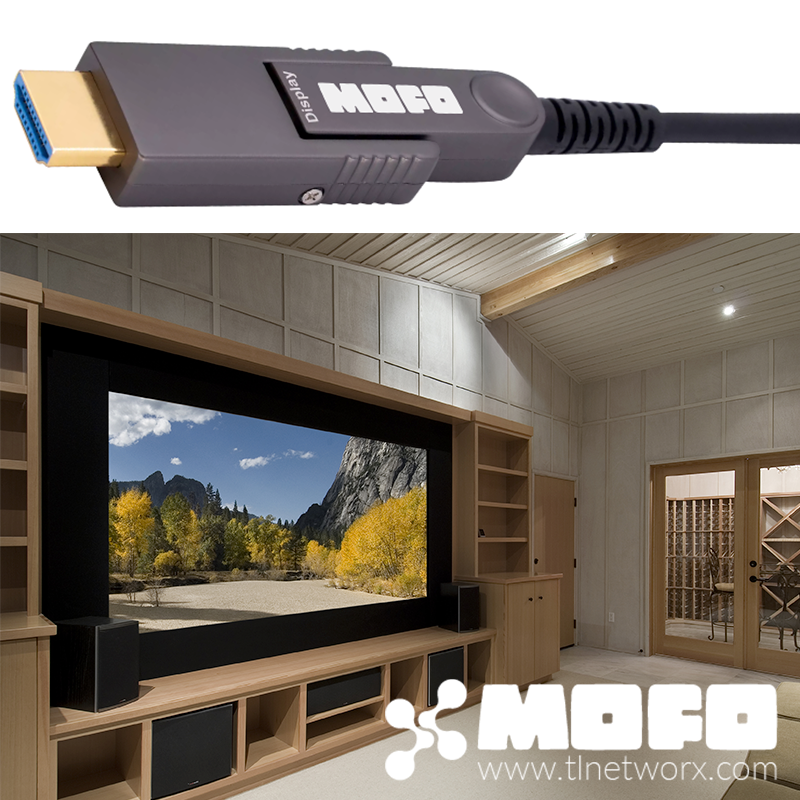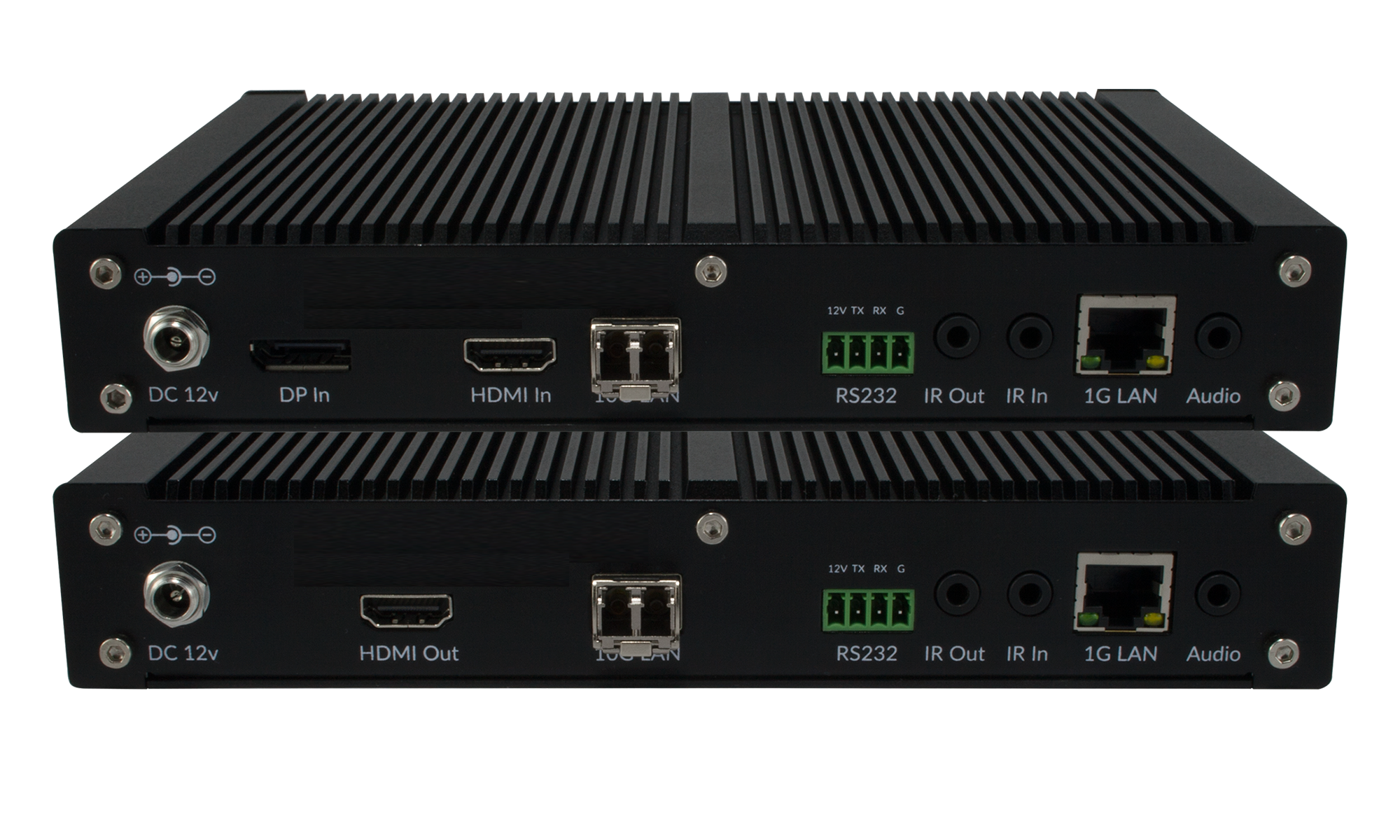Extending Twisted Pair-based Devices over Fiber

Fiber delivers numerous signal transmission benefits over twisted pair, including longer distances, immunity to static electricity and surges, immunity to RF and EM interference, and significantly higher supported signal bandwidths. However, the majority of network-enabled devices don't feature a fiber connection. Most switches, routers, access points, cameras, media players and other network connected devices still rely on traditional twisted pair connections through RJ45 ports. Does that mean you're limited to 100 meter max distances over a cable prone to interference and slow speeds? Thankfully no.
This article explores adapting twisted pair-based devices to fiber optic cabling through the use of SFP modules and media converters.
SFP Ports & Modules
Increasingly, a new port is popping up on network switches, routers and interface cards. Labeled SFP or SFP+, the port is unassumingly plain -- an empty rectangle devoid of any tabs or visible pins. This simple, often overlooked slot has the power to unlock miles of transmission distance and significantly higher network speeds.

The SFP port is designed to accept an SFP module, or small form-factor pluggable module. Also known as a transceiver, these modules facilitate the integration of fiber optic cabling into the network, thereby providing the bandwidth, distance and immunity that are inherent to fiber.

SFP modules are available in two main formats: SFP modules which are rated for 1G connections and SFP+ modules which are rated for 10G connections. The transmission distances for the 1G and 10G signals vary by manufacturer and the type of fiber cabling used. For example, TechLogix SFP modules using multimode fiber extend signals up to 550m (1,805 ft.), whereas SFP modules using single mode fiber extend signals up to 20km (12.4 miles).
| Part | Style | Fiber Type | Connectors | Distance |
| TL-10GSFPP-MM300 | 10G SFP+ | Multimode OM3/OM4 | Duplex LC | 300m / 984ft. |
| TL-1GSFP-MM550 | 1G SFP | Multimode OM3/OM4 | Duplex LC | 550m / 1,805ft. |
| TL-10GSFPP-SM10K | 10G SFP+ | Single Mode OS2 | Duplex LC | 10km / 6.2 miles |
| TL-1GSFP-SM20K | 1G SFP | Single Mode OS2 | Duplex LC | 20km / 12.4 miles |
The vast majority of SFP and SFP+ modules -- regardless of fiber type -- use duplex LC connections (two strands of fiber with LC connectors).
Using Network Switches with SFP Ports to Extend Signals
Network switches with SFP ports can be used to extend LAN signals (and the twisted pair-based devices transmitting the signals) over fiber. The SFP ports of two switches simply need to be linked using SFP modules and compatible fiber optic cabling (multimode SFP ports with multimode fiber, single mode SFP ports with single mode fiber, etc.).
Using the SFP module, the network switches effectively convert the electrical data signals from the connected twisted pair devices into light waves. These light waves are transmitted over the fiber cabling where they are received, processed and re-converted back to an electrical-based format.
In practice, this means the twisted pair devices connected to one switch can communicate with the twisted pair devices connected to a different switch over literally hundreds, if not thousands, of meters of fiber optic cabling.

Linking switches via SFP modules and fiber optic cabling is widely used in a variety of applications:
- Connecting networks between buildings
- Connecting networks between floors of buildings
- Connecting remote security cameras
- Connecting remote access points
Using Media Converters to Extend Signals
Many previously installed network switches don't feature SFP ports and fiber-compatible replacements can be costly. Similarly, many applications simply require the extension of one or two twisted pair-based devices and purchasing an SFP-enabled multi-port switch may be overkill. In these applications media converters are an ideal solution.
Like network switches with SFP ports, media converters convert electrical signals into light waves; however, unlike network switches, media converters typically only support one or two concurrent twisted pair devices.
 Example Media Converter Example Media Converter |
The main purpose of a media converter is to convert different forms of media (i.e., electrical signals to optical signals, single mode optical signals to multimode optical signals, etc.). Media converters are not designed to switch, route and manage network signals; therefore, they provide a lower cost alternative when the main function is a point-to-point connection and conversion.
Like network switches, most media converters feature an SFP port that is compatible with both single mode and multimode SFP modules, allowing different fiber optic cables to be used for varying distances.

The Big Picture
Whether using SFP-enabled network switches or media converters, it is possible to adapt twisted pair-based devices with RJ45 connectors to a fiber optic infrastructure. Fiber offers numerous advantages over twisted pair, including signal transmission distance, signal bandwidth, and immunity from lightning, surges, static electricity, RF interference and EM interference.
TechLogix manufactures the fiber cabling and network interface components that will allow you to seamlessly deploy a hybrid system.
The TechLogix design team is available to help you identify compatible hardware and choose proper system components. Please contact us with any questions or concerns.
Image Credits: Niveo Professional (www.niveoprofessional.com)




Comments